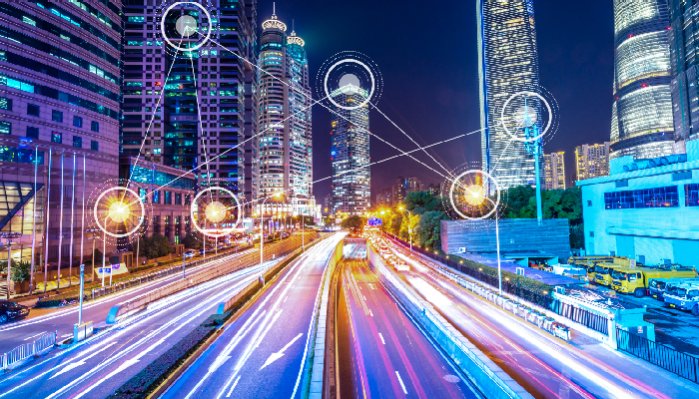Japan has long stood at the forefront of technological innovation, and one of the most remarkable areas where the country has set global standards is alert feature technology. From natural disasters to public safety systems, Japan’s approach blends advanced engineering, cultural preparedness, and human-centered design. This article explores why nations around the world look to Japan as the model for efficient, life-saving alert technology.
Japan’s Technological Legacy
Japan’s history of innovation is deeply rooted in a culture that values precision, reliability, and collective responsibility. After World War II, Japan rebuilt its economy through technology-driven industries, producing world-renowned companies like Sony, Panasonic, and Toyota.
This same dedication to quality extended beyond consumer electronics into the public safety domain. The idea that technology must serve humanity and protect lives became central to Japan’s national development strategy. As a result, the country’s infrastructure evolved to include highly advanced alert systems designed to warn citizens before disaster strikes.
The Essence of Alert Feature Technology
Alert feature technology refers to systems designed to detect, analyze, and communicate emergencies in real time. These systems rely on networks of sensors, satellites, and communication tools that send notifications directly to mobile devices, televisions, sirens, and public broadcasting networks.
The goal is simple yet vital: to save lives by giving people seconds—or even minutes—of warning before an impending threat. In Japan, these technologies are not limited to earthquakes but also include alerts for tsunamis, typhoons, floods, and even missile threats.
Why Japan Leads the Way
Japan’s leadership in this field is the result of both necessity and innovation. The country’s geographical location on the Pacific “Ring of Fire” makes it one of the most disaster-prone nations on Earth. Frequent earthquakes, volcanic activity, and severe weather have made preparedness a way of life.
The Japanese government and private sector work closely to ensure national resilience. Agencies like the Japan Meteorological Agency (JMA) and companies such as NTT Docomo and KDDI have invested heavily in building reliable, fast, and multilingual alert systems that can reach millions within seconds.
The Earthquake Early Warning (EEW) System
Japan’s Earthquake Early Warning (EEW) system is a prime example of world-leading technology. Operated by the Japan Meteorological Agency, it detects the first seismic waves (P-waves) and instantly estimates the strength and expected arrival time of stronger waves (S-waves).
This system can deliver alerts to smartphones, televisions, and public address systems within seconds. During the devastating 2011 Tōhoku earthquake, millions of people in Tokyo received a one-minute warning before strong shaking reached the city—enough time to take shelter and halt trains, preventing greater catastrophe.
Continuous upgrades, including improved sensors and AI-based predictive algorithms, have made Japan’s EEW one of the most sophisticated warning systems in the world.
The J-Alert Nationwide Network
Another vital part of Japan’s safety ecosystem is J-Alert, a satellite-based emergency broadcast system introduced in 2007. It provides alerts for various threats—earthquakes, tsunamis, volcanic eruptions, missile launches, and severe weather.
J-Alert messages are distributed through TV, radio, smartphones, and even loudspeakers installed in public areas. The system’s speed is remarkable: it can deliver warnings to local governments within one second and to citizens within seconds after detection.
Unlike many other systems worldwide, J-Alert also provides multilingual support to accommodate Japan’s large tourist population, ensuring that non-Japanese speakers receive clear and understandable messages.
Telecommunication Giants and Safety
Japan’s major telecom operators—NTT Docomo, KDDI, and SoftBank—play a crucial role in nationwide alert dissemination. They use Cell Broadcast technology, which allows messages to reach all phones in a specific area without network congestion.
This system proved its worth during typhoons and earthquake events, where traditional SMS-based alerts would have caused delays. Additionally, smartphone applications such as “Safety Tips,” supported by the Japan National Tourism Organization, provide real-time updates for tourists and residents alike in multiple languages.
AI and Smart City Integration

Artificial Intelligence has taken Japan’s alert systems to the next level. AI helps in predicting and categorizing emergencies more accurately by analyzing vast data streams from sensors, satellites, and IoT devices.
Smart cities like Tokyo and Yokohama integrate AI-driven alert mechanisms with transportation systems, enabling automated train shutdowns or rerouting during earthquakes. This combination of AI, IoT, and big data has transformed Japan’s urban areas into highly responsive and resilient environments.
Cultural Preparedness and Public Education
Technology alone isn’t enough to save lives; culture and education play equally important roles. In Japan, disaster preparedness is part of everyday life. From a young age, children participate in regular earthquake and fire drills, learning exactly how to react when alerts sound.
This cultural emphasis on discipline and collective responsibility ensures that people trust and respond quickly to alerts. Public service campaigns, community training, and annual national drills reinforce this awareness and keep citizens alert-ready.
Global Influence and Adoption
Countries across the world have started adopting Japan-inspired systems. The United States, South Korea, and New Zealand have all studied Japan’s EEW model when designing their own alert networks.
Japan also contributes to global initiatives like the UN’s Sendai Framework for Disaster Risk Reduction, providing technical guidance and training to developing nations. Its ability to combine technology, government coordination, and public engagement makes it a model worth replicating.
Challenges and Ongoing Innovation
Despite its success, Japan continues to refine its systems. Challenges include ensuring accurate predictions, reducing false alarms, and improving alert delivery in remote regions.
As climate change increases the frequency of extreme weather, Japan is investing in satellite-based monitoring and next-generation AI that can predict disasters earlier and more precisely. The government’s vision for 2030 includes even faster global alert sharing and integration with wearable technology for instant personal safety updates.
The Human Side of Technology
What truly sets Japan apart is its human-centered approach. Every advancement in alert technology is designed with empathy—focusing on saving lives, reducing panic, and maintaining order.
Even during times of crisis, Japan’s citizens demonstrate calmness and cooperation. This human factor, combined with reliable technology, makes their system not just effective but deeply humane.
Japan’s Global Impact
Japan’s success has reshaped how the world perceives technology and safety. Its innovations have influenced everything from earthquake sensors in California to tsunami alert systems in Indonesia.
Beyond disaster prevention, Japan’s model promotes trust, transparency, and inclusiveness—values that form the foundation of effective public safety worldwide. Nations continue to look toward Japan not only for its technology but also for its example of how to blend innovation with compassion.
Buzzlift: Brooke Schofield’s Age: A Look at Her Life, Career, and Success
Conclusion
Japan’s achievements in alert feature technology stand as proof that innovation can be both practical and life-saving. Through a combination of cutting-edge systems, cross-sector collaboration, and a deeply ingrained culture of preparedness, Japan has built a model that others strive to follow.
As the world faces mounting environmental and technological challenges, Japan’s example reminds us that technology’s greatest purpose is to protect human life—and that true progress lies in the harmony between science, society, and compassion.






